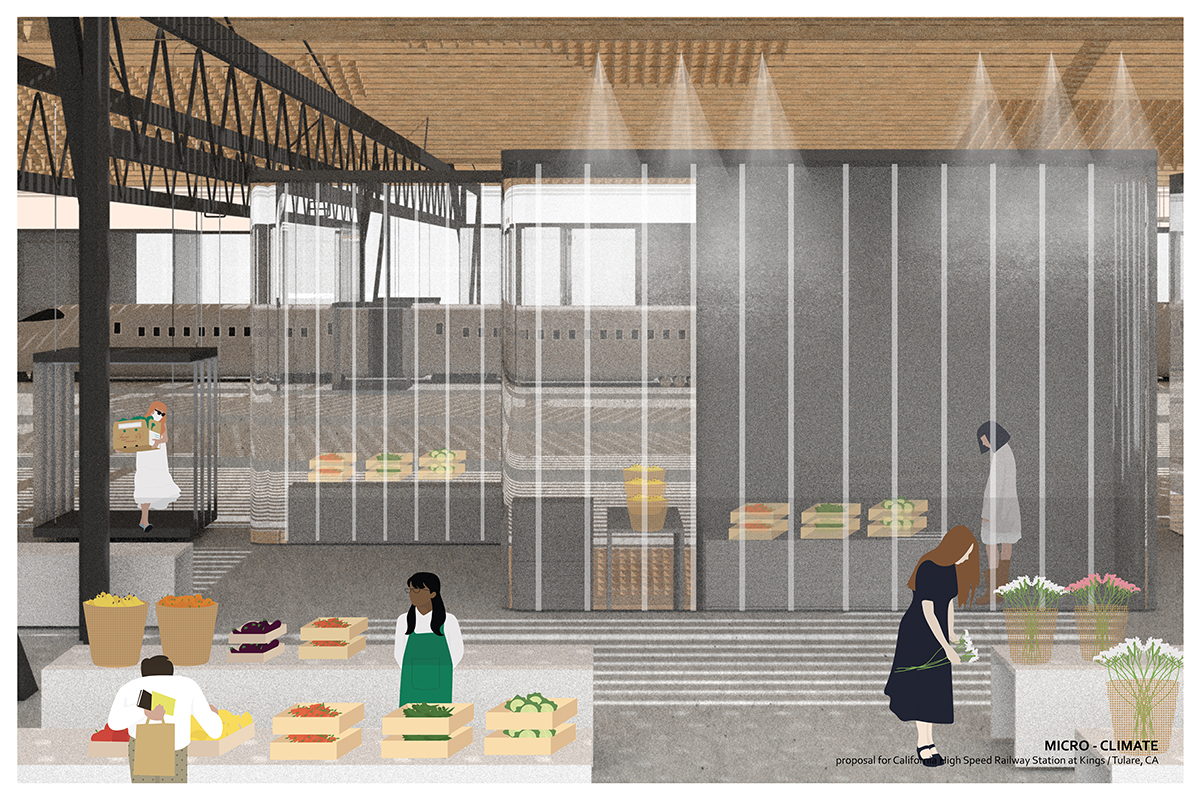
Logistics and their associated warehouses have permeated the Central Valley, taking advantage of both the cheap land and proximity to cities. The planned High-Speed Railway offers the opportunity to question how logistics might empower local businesses and communities.
Large online retailers continue to capture an increasingly large swatch of the market, leaving small businesses without a competitive edge both in terms of online legitimacy and shipping speeds. Leveraging the High-Speed Railway to move goods, in conjunction with a digital platform that is more locally and collectively operated, allows small businesses to be competitive within the immediate expectations of the logistical world.
By slowing down the movement of goods at logistical centers associated with High-Speed Railway stop, enables local access to goods as well as a physical platform for sales. While logistical centers often operate in the background despite being stamped across the landscape where the public does not perceive or acknowledge the harm on landscape and labor exploitation, in our proposal we bring these to the public space of infrastructural flows. By providing visibility to the logistics, we hold accountable the environmental and labor footprint of these centers.
Proposing an alternative for current logistics, having the logistic center along the railway platform will give an opportunity platform to the local small businesses, these businesses will actually benefit from the footfall on the station platform and have an advantage to use the warehouses also for stocking and sending their goods through the High-Speed Railway, by doing so these businesses will have an opportunity to compete with high shipping costs of large retailers.
The logistic hubs will be an intersection of people and commodities that may be kept for a day or so before being pushed to the High-Speed Railway, allowing better visibility and an alternative to waiting time by slowing down logistical flow. These centers are situated to link both sides of the urban centers traditionally segregated by rail.
The two architectural proposals examine the stops at Fresno and King/Tulare.
In Fresno, due to the centrality in the system and culture of making, the stop focusses on maker culture and also provides shared incubator making spaces for young companies.
In Kings/Tulare, agricultural produce is aggregated to create a hybrid logistical center-food market to address the pressing issues of food deserts. Designed with a series of thermal enclosures, the station provides a series of atmospheres to support food storage, selling and buying.
Ultimately, by considering how the public interfaces with logistics and leveraging logistics for small companies provides a platform to empower local populations.
This project explores a problem in so many cities where public spaces are not connected; the student really thought through how to bring them together in a well-developed polemic on the intersection between transportation and architecture. The jury applauds their efforts to leverage rail for increased efficiency in logistics and economic development.
– 2023 Urban Design Awards Jury